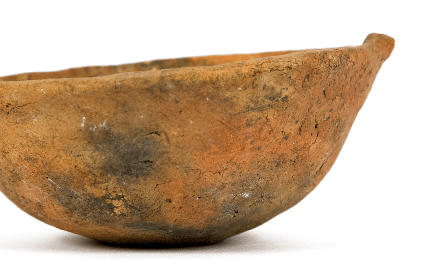
The Department of Iron Age
In the Department of Iron Age are collected and compiled collections from the earlier pre-Roman period, the period of Roman influence and the early phase of the Great Migrations Period, ie. from the time of the turn of the third / second century BC until the middle of the fifth century AD. Most collections are the relics of today's Polish territory, from the excavations of the National Archaeological Museum, a small part of the collection comes from Ukraine and Belarus. The relics gathered in the collections of the Department of Iron Age come mainly from cemeteries and settlements of the Przeworsk culture with population that inhabited the lands of present-day central and southern Poland and Wielbark culture of Pomerania, the eastern Mazovia, Podlasie and Lublin region. The most interesting and most valuable part of the collection are the sets of grave items from the huge Przeworsk culture cremation cemeteries for example from Kamieńczyk, Nadkole and Oblin in the eastern Mazovia and Spicymierz in Wielkopolska province - besides ornaments, items of clothing, weapons and tools from this necropolis come several thousand pieces of pottery. The special character have the relics from the rich graves of the nobility (ie. princely graves) from Łęg Piekarski at the middle Warta - among numerous bronze and glass vessels imported from the territory of the Roman Empire, silver jewelry and ornaments attention is drawn to the unique Celtic bronze bowl decorated with red enamel . In the group of relics of Wielbark culture stand out finds from the bi-ritual necropolis at Jartypory on the south-western Podlasie province, with the finds of extremely impressive silver jewelry and necklaces of beads and pendants from glass, amber, bronze and silver, and unique imported bronze goblets decorated with colored enamel. A set of artifacts from the "princely" tomb from Rudka in Volyn is also connected with this culture. Valuable and extremely interesting are also the relics from the graves of Celtic warriors from Iwanowice near Cracow, amber beads from a large deposit ("treasury") from Basonia in the western Lublin region, and a large series of relics, including silver and enamel jewelry from the north-western coasts of the Black Sea, from the nineteenth-century collection of a Polish doctor from Kiev - Józef Choynowski. Spectacular relics from the first centuries of AD is a well made of a hollow trunk of an oak from the Przeworsk culture settlement in Izdebno Lościelne in the western Mazovia, and wooden structural elements from the only one in Europe "barbaric" hematite mine in Rudki in the Holy Cross Mountains, operated by the people of Przeworsk culture. In recent years the department staff conducted excavations, among others, in Szelków, County of Maków, in Czersk, County of Piaseczno and in Wyszków.